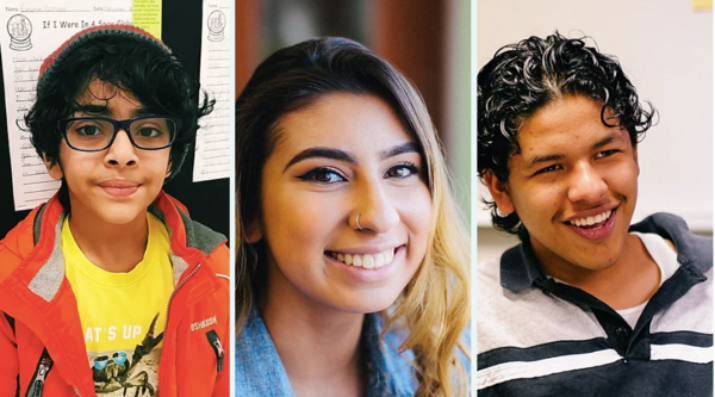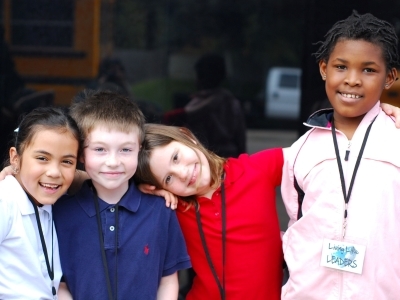Storytelling for Stronger Communities and Deeper Learning
Topics

When educators design and create new schools, and live next gen learning themselves, they take the lead in growing next gen learning across the nation. Other educators don’t simply follow and adopt; next gen learning depends on personal and community agency—the will to own the change, fueled by the desire to learn from and with others. Networks and policy play important roles in enabling grassroots approaches to change.
Learning to tell a better story about students and their learning might be the solution to some of the biggest challenges we face in K-12 education.
Our Brains Are Wired for Stories
Telling and listening to stories is how human beings collaborate and create meaning. So, how might we better harness the power of storytelling in our classrooms and schools?
Gary Chapin of Rabbithole Storytelling is an expert in both storytelling and ethical assessment, and we sat down (Zoomed down) to talk about how learning to tell a better story might be the solution to some of the biggest challenges we face. The full interview follows. Here are quick hits I’m still thinking about:
- Leadership is selecting and telling the right story AND giving people a place in that story
- Storytelling builds a learning community and accelerates a sense of belonging
- Student storytelling gives teachers a better answer to “What do we do next?”
- Storytelling is an evolving collaboration between the teller and an authentic audience
- You can tell a meaningful story in 60 seconds (and Gary shares his favorite protocol)
- Storytelling primes the thinking for a faculty meeting and honors your faculty’s expertise
- The key to better assessment is unlocking decision points (and stories get you there)

Credit: Gary Chapin
DH: Gary, thanks so much for doing this. How did you get interested in storytelling?
When I was a curriculum director, I saw how powerful it was for people to share their stories. But what made the difference was when I started working with Native Hawaiian educators at the Hawaii Department of Education. They have this practice called Talking Story, where telling and listening to stories is the mechanism that builds community.
As a school leader, I learned from an early mentor that if you want to lead, you must tell a meaningful story.
You have to help people understand why it’s the right story (because there are a bunch of stories), and you have to give people a place in the story. That’s my mantra for leadership storytelling.
As a teacher, stories operate on many levels: the story you’re telling the kids, the story you’re living with them, and the story the kids bring. The more you can get those stories into the room, the more you build a learning community, and in school, building community and a sense of belonging is vital.
DH: How do I use a story as a school leader, less as a getting-to-know-you check-in, and more as the work we will do during this meeting?
I was in a circle with a Hawaiian elder, and she was leading what was ostensibly a getting-to-know-you exercise. And it ended up being a 90-minute session. Nobody was looking at their watch and saying, “when are we going to get to what we’re really doing?” What we were really doing was seeding indigenous plants after an invasive species had pushed them out. She could have said, “Here, do this, and then do that.” But instead, we went through this relational piece, which became a significant and powerful experience. I learned a lot, AND I still keep in touch with those people. That’s the kind of community you need in an educational setting.
Stories are also critical to assessment. Tests distill a student’s learning experience down to one number. That one number is a story. It’s just a very bad story. It’s shallow. When students tell the story of their learning, not only will it help their learning, it will help you as a teacher. You’ll have a clearer understanding of where your students came from, where they are, and what they will do next. Marzano says the only reason to do an assessment is to figure out what to do next. If you give a kid an 85, how do you know what to do next? You have a better idea if you have the story of their learning.
DH: Can you give an example of what the artifact is – when you have what you’re describing as “the story of their learning?” What are you documenting?
The most meaningful way I’ve seen it captured is through exhibitions with an authentic public audience. Teachers, as much as we want to be, are never an authentic audience.
Imagine middle schoolers that create a project for History Day. They start by presenting the story of their topic. The people who are visiting can and will ask them questions. “Why did you pick this topic? What did you find interesting? How did your views change from the beginning to the end?” They’ll have conversations about it, and a story develops through that conversation. In that case, the conversation is the artifact.
When I was teaching, we had senior exhibitions where students picked a topic – I had one student create a five-person, five-wheel bicycle. Another worked with a Wabanaki elder and created totem poles. Another worked with an event manager in town and led the planning of a wedding, and if you mess that up – holy cow – you’ll catch it. The point isn’t the wedding planning, the totem pole, or the bicycle (quint-cycle). It’s the story they chose. They presented their work publicly, taking questions from an audience. That public speaking piece was super important.
Being comfortable speaking in public is like giving a kid a superpower.
Another type of artifact is to make a recording of your work. In the graduate class I’m teaching now, my students are creating assessments, and I’ve asked them to tell the story of their assessment model using a slideshow with voiceover. They’re not just presenting the assessment as a neutral object. I want to understand their process. I want to hear about two or three revisions of the assessment.

Credit: Gary Chapin
DH: What happens when you ask your students for the story, and they don’t give you the information you need? How do you get a better story?
Through questions. Talking Story is a hybrid between a narrative and a conversation. By asking questions, you’re teaching them how to tell a story. Even for my graduate students, I had to coach them by setting the scene. It’s a virtual class, so I said, “Imagine I’m with you in Louisville, Kentucky, and invited you to a coffee shop to tell me about your work. That’s how your voiceover should sound.” That framing freed up the storytelling because it doesn’t feel like a performance. Talking Story isn’t a performance.
Most of us tell stories all the time. It’s only when we think about it that we get stuck. Right? So give students a frame that lets them get out of their own way.
Ask straightforward questions that don’t have a bias. Don’t ask, “Shouldn’t you have done this?” Ask, “What else did you consider?” “What would you do now?”
DH: One attitude I encounter with adults is, “Stories are a waste of time.” When people only have 30 minutes and 12 agenda items, they skip storytelling. Why is storytelling also a critical agenda item?
You don’t have to tell stories at every meeting. It just needs to be somewhere. A PD Day is a great day to do this. Get your faculty together and share stories. There will always be people who say, “This is dumb. I could be doing real work.” But it is real work.
I suggest using protocols. Some people feel like protocols are uncomfortable. They’ll say, “We’re adults. Can’t we just talk?”
We “just talk” all the time and often don’t get anywhere.
Protocols can help us access helpful information in a few minutes. How many minutes drag on in the meeting if you don’t use a protocol?
DH: Alright, let’s imagine it’s a Thursday night, and I have a faculty meeting tomorrow morning. Give me one protocol—surefire—to get us more connected AND productive.
There is a protocol called a Micro Lab. It’s extremely controlled (one of the reasons I like it), and it ensures everybody in the room gets a voice.
- Put people in groups of three. Not two. Not four. Three. It’s important for the timing.
- Have three questions, and give them out one at a time.
- Ask Question #1 and require one minute to think. Some people appreciate and need this time to organize their thoughts. For others, it’s the most uncomfortable minute they ever go through.
- Person One gets one minute to tell their story. Just one minute. Then Person Two, and then Person Three.
- Ask Question #2 and repeat changing the order of tellers: One minute of silence, then Person Two gets one minute to tell their story, then Person Three, then One.
- Ask Question #3 and repeat changing the order of tellers. One minute of silence, then Person Three gets one minute to tell their story, then Person One, then Two.
It’s important to note how it’s always just one person talking. This is not a conversation.
Say your meeting is about parents. Your three questions might be:
“What is a story of a recent encounter you had with a parent?”
“What did you learn from that experience?”
“How would you do that differently next time?”
This protocol works for a bunch of reasons:
- It only takes 12 minutes, literally.
- They’re telling a story about themselves, so they don’t have to dig for knowledge. And it connects them to whatever the meeting is about. If this is a meeting about parents, it activates thinking along those lines.
- It honors their experience and knowledge because you’re drawing from their story. The meeting can be about what they learned and how to use that learning.
- If you mix people up, which I do all the time, they have this short little encounter with somebody they may not know. And it builds connections in the group.
DH: I like that. Especially how it activates the thinking and honors their experience. What’s your favorite question to ask as a teacher?
“Why did you make this decision?”
Whenever I look at student work, especially in assessment, I always look at the points where the kid had to make a decision. And I ask, “why did you choose to do that?” When I teach performance assessments to the teachers, I try to get them to build as many of those decision points as they possibly can into the assessment.
Every time the kid has a chance to make a decision, that’s a chance for you to learn something about the kid.
We are excited to offer two new professional learning workshops in collaboration with Gary that will explore story as a tool for building community and deepening learning.
This article originally appeared on EXPLO Elevate on March 3, 2023.
Photo at top courtesy of the Assessment for Learning Project.




